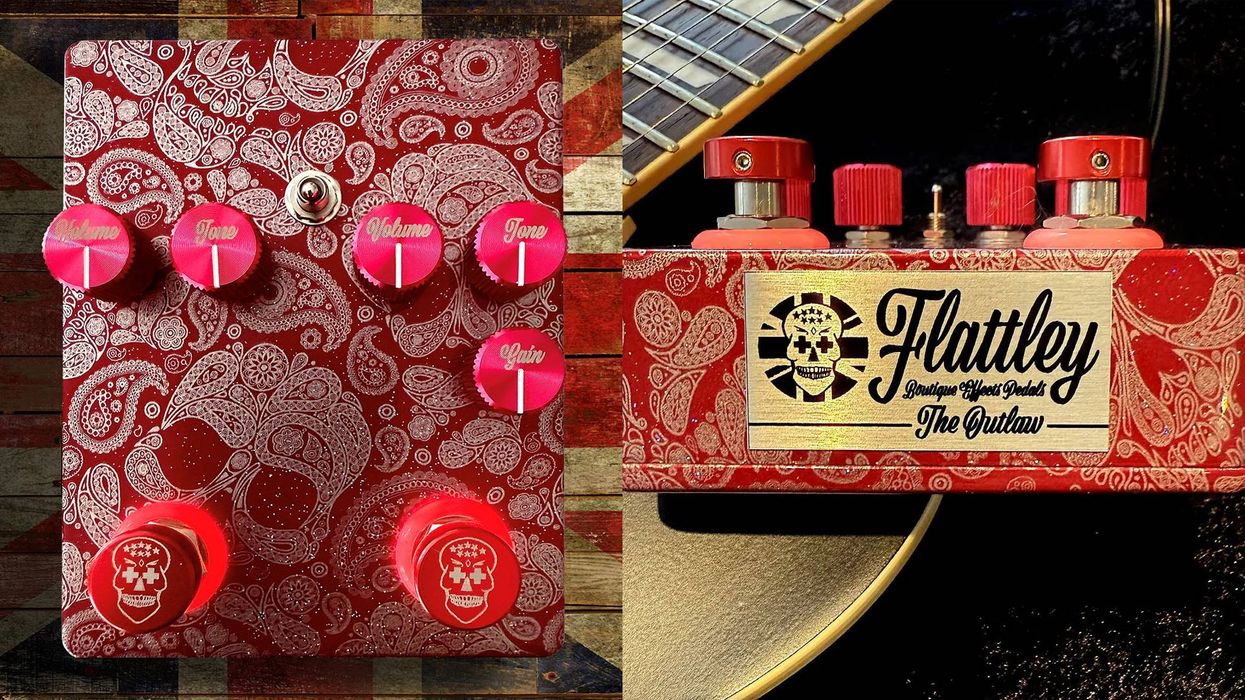In the September 2010 issue, we began
exploring the subject of fast-response
amplifier designs with a column on Hiwatt
heads (“Mo’ Watts—A Nostalgic Look at Hiwatt”). Let’s continue this discussion
using the same amp we cited before
as a classic example of fast-response
circuitry—a vintage Vox AC30. But this
time we’ll compare our reference AC30 to
a more modern example of a great fast-response
amplifier—the Mad Professor
CS-40 head. By the way, if you haven’t
yet had the opportunity to play a fast-response
amplifier, you’re in for a treat:
Experiencing the sheer speed of picked
notes rushing through the speakers can
change the way you think about guitar.
Let the Fun Begin
A vintage Vox AC30 produces a very
springy sound because it has more
output-tube compression factored into
its design than the Mad Professor CS-40.
This compression is one of the reasons a
properly maintained original AC30 is so
much fun to play. By contrast, the CS-40
uses the least amount of output-tube
compression of any modern guitar amplifier
that I know of. However, both these
amplifiers are very fast and very dynamic.
And, oddly enough, despite the difference
in output-tube compression, both
have a hauntingly familiar and similar feel.
I’m writing this column in Boston, where
I’ve been able to compare stellar examples
of both amps side by side. A close
friend of mine and I have been having a
blast listening to his CS-40 driving a ’90s
Matchless 2x12 extension cabinet. Sitting
right next to this setup was his favorite
candy panel 1963 AC30 Top Boost combo.
For our sonic hijinks, we also had several
vintage and modern guitars on hand.
The Vox Vibe
We played the AC30 first because we
were both familiar with its seductive
sound (and touch). We also started with
the AC30 because we both agreed it
represents the first historical example
of a fast-response guitar amplifier. The
first guitar we plugged in was a great-sounding
2006 Les Paul. This combination
gave us a sound and tone that instantly
reminded us of Mike Campbell, longtime
lead guitarist for Tom Petty and the
Heartbreakers. Okay, that’s not a bad
thing is it? The AC30 loves to be set at
(or just slightly under) the point of breakup.
This is where that opening chord to
“A Hard Day’s Night” sounds like a choir!
Though the AC30 has a healthy output,
there is a point where you get a creamier
distorted tone as you raise the amp’s
volume control. Cranking the volume
from there won’t actually make the amp
any louder—that’s where the output-tube
compression comes into play.
Going Mad
Moving along, my friend and I then
switched amps and set the CS-40’s controls
to yield a clean loud volume. Wow!
We immediately noticed that the CS-40
was producing an amazing shift in distortion
texture and character as we dug
hard into the strings. The resulting effect
was very refreshing. By varying our pick
attack, we could play the same two notes
and produce a sound that was quite
like a trained human voice going from a
soft whisper to a scream. This particular
sound was more akin to a solo singing
voice, whereas the AC30 sounded like
the aforementioned choir—a different
sound entirely!
Both amps are a joy to play because of
their speedy response and touch-sensitivity.
But they also have several differences.
For one thing, AC30s (and other Vox
models, come to think of it) will not do
jazz guitar much justice, in my experience.
This is because the Vox’s midrange frequencies
are voiced higher in comparison
to Fenders and other popular amps. Now,
the CS-40 can do jazz sounds incredibly
well, and it’s the only modern design I’ve
played that can nail that old mid-1950s
jazz guitar tone that Herb Ellis achieved
with the Oscar Peterson Trio.
Here’s the kicker: Moving into distortion—
from slightly dirty to heavily saturated
tones—is a walk in the park for
the CS-40. Sonically, it’s an extremely
versatile, Swiss Army-knife amplifier, and
we had serious fun dialing up an array of
distortion textures.
While comparing the AC30 to the CS-40, I
realized that vintage amps were designed
to be “clean.” In the old days, it was common
for an amplifier company to warn you
in the owner’s manual that if you heard
any distortion, the amp was too loud and
you should turn it down. Compare that to
the CS-40, which is designed to produce
a full spectrum of tones, from sparkling
clean to massively distorted. These two
models illustrate how amp circuitry has
evolved over the years to keep pace with
guitarists’ demands.
Next month, I’ll be back with more
gear adventures. Meanwhile, thanks to
my friend, Milton Reder, owner of Rear
Window Recording Services in Brookline,
Massachusetts, for giving us beyond-generous
use of his world-class facilities,
and for providing the instruments and
amplifiers we used for this month’s sonic
explorations.
Dean Farley
The chief designer of “Snake Oil Brand Strings” (snakeoilstrings.com), Dean Farley has influenced contemporary string design and is a great source of guitar, amp, and gear lore.















